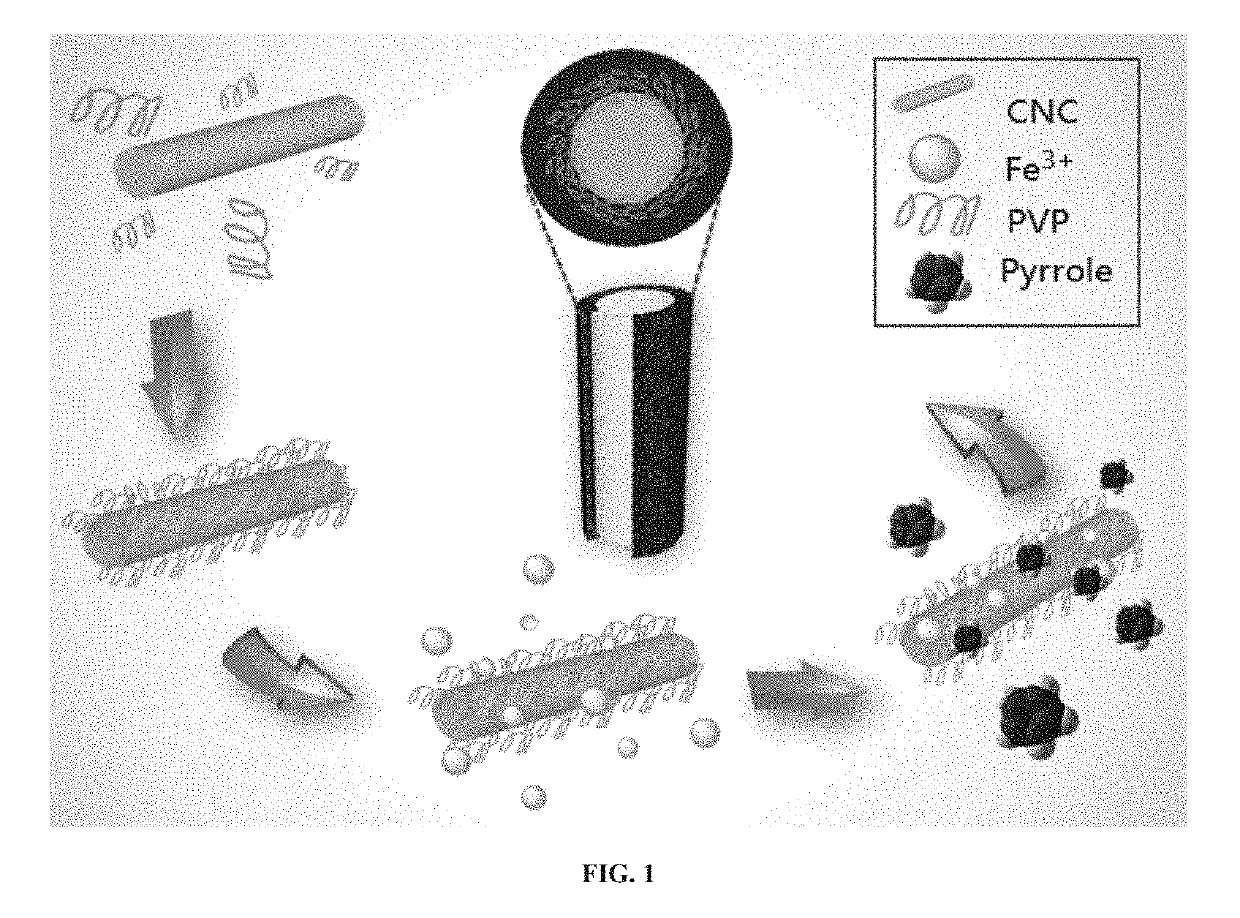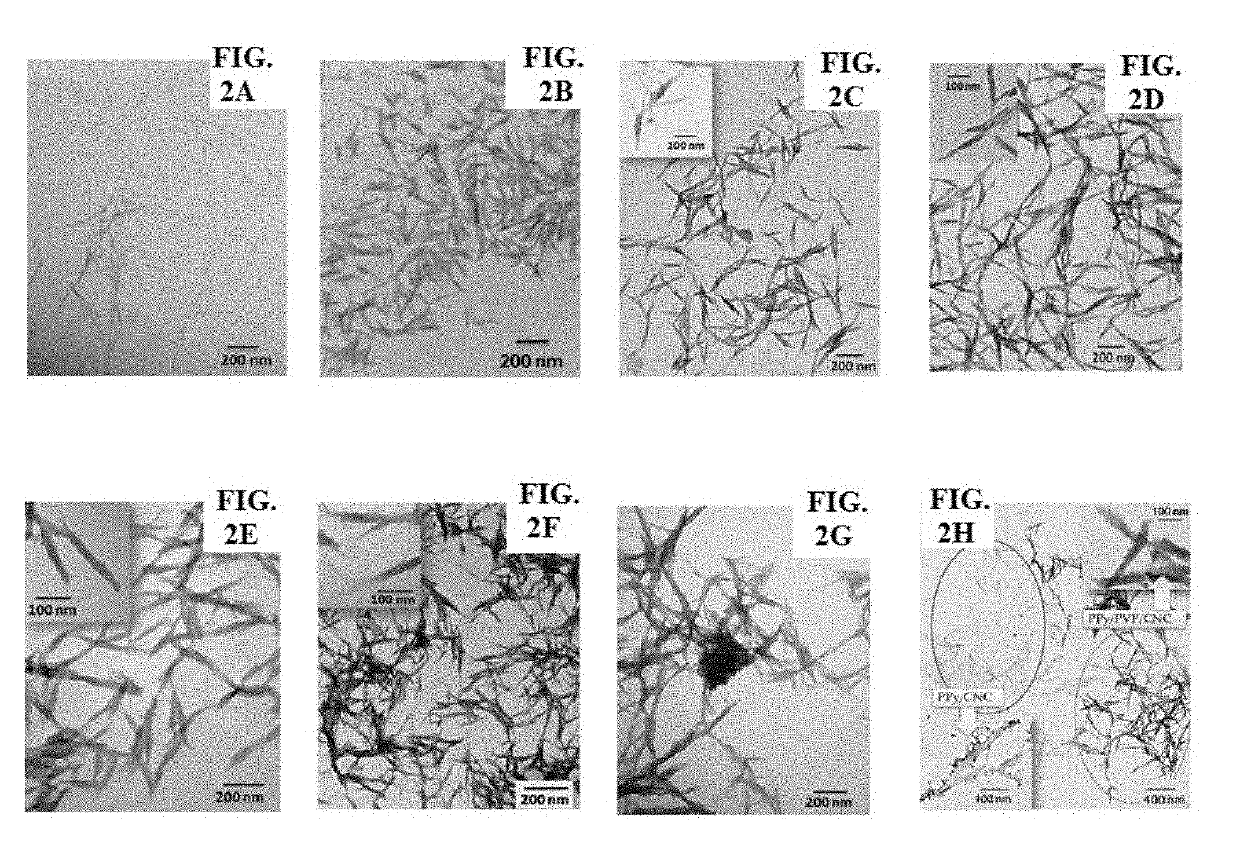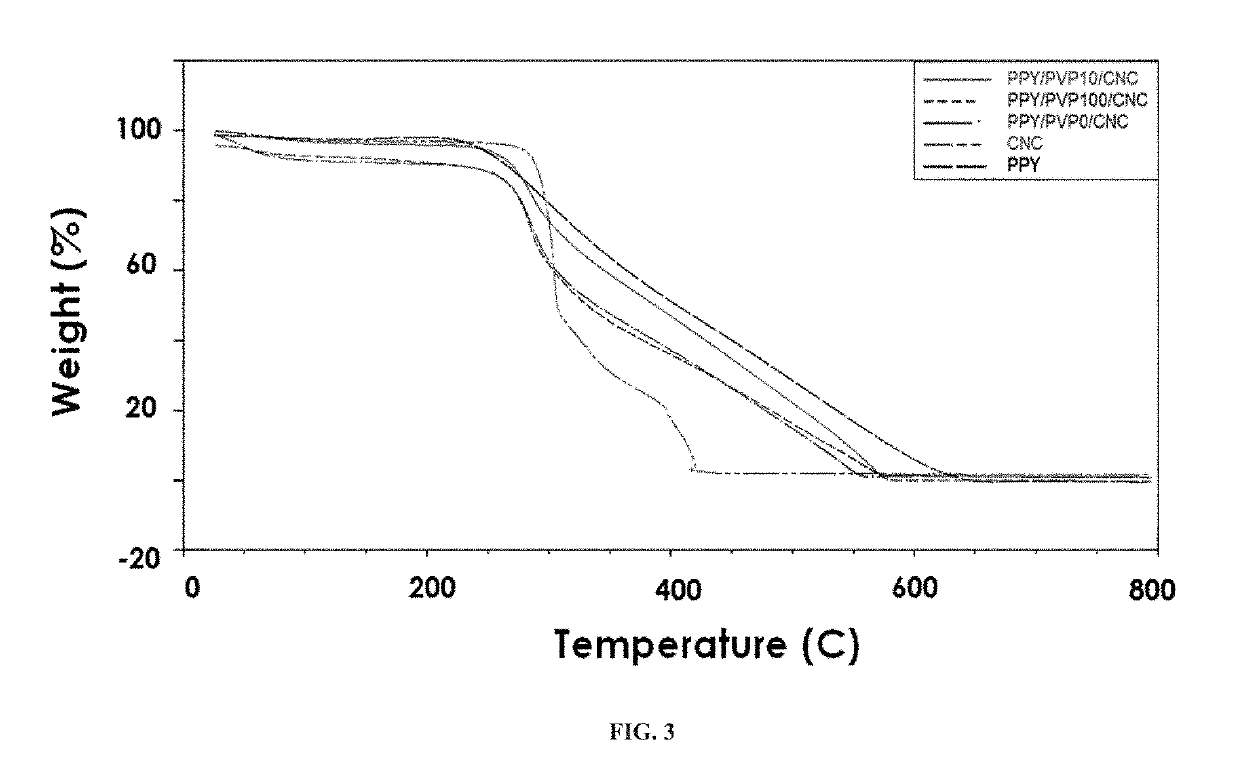Conductive cellulose nanocrystals, method of producing same and uses thereof
a technology of conductive cellulose and nanocrystals, which is applied in the direction of non-metal conductors, conductors, transportation and packaging, etc., can solve the problems of poor processibility and unsatisfactory specific capacitance (cs) (f/g), and the inability to process into useful products
- Summary
- Abstract
- Description
- Claims
- Application Information
AI Technical Summary
Benefits of technology
Problems solved by technology
Method used
Image
Examples
Embodiment Construction
[0027]Additional details describing various embodiments of the present surface-modified cellulose nanocrystals (CNCs), comprising a surface agent, and an intrinsically conductive polymer is provided.
[0028]As used herein, the term “intrinsically conductive polymer” refers to organic polymer that conducts electricity. In one embodiment, the conductive polymer of said conductive polymer / cellulose nanocrystal composite is polypyrrole, polyaniline, polyindole, polythiophene, poly(3-methylthiophene, poly(N-methyl aniline), or poly(o-toluidine). Preferably, the conductive polymer is polypyrrole.
[0029]The CNCs herein are rod-like crystals with a mean diameter of 10-20 nm and lengths of 200-400 nm. It can practically be extracted from various sources like cotton, wood, alga etc. In this case, we used kraft-bleached pulp, which was obtained from Domtar and the CNC was produced by Celluforce Inc. (Montreal, Quebec Canada).
[0030]As described herein, the CNCs are coated with a surface agent befo...
PUM
| Property | Measurement | Unit |
|---|---|---|
| length | aaaaa | aaaaa |
| diameter | aaaaa | aaaaa |
| shrinkage | aaaaa | aaaaa |
Abstract
Description
Claims
Application Information
 Login to View More
Login to View More - R&D
- Intellectual Property
- Life Sciences
- Materials
- Tech Scout
- Unparalleled Data Quality
- Higher Quality Content
- 60% Fewer Hallucinations
Browse by: Latest US Patents, China's latest patents, Technical Efficacy Thesaurus, Application Domain, Technology Topic, Popular Technical Reports.
© 2025 PatSnap. All rights reserved.Legal|Privacy policy|Modern Slavery Act Transparency Statement|Sitemap|About US| Contact US: help@patsnap.com



